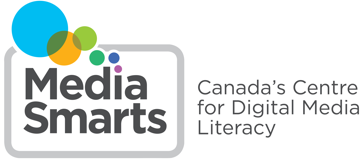Cyberbullying and the Law (Grades 9-12) - Lesson
In this lesson, students learn about and discuss the legal aspects of cyberbullying.

In this lesson, students learn about and discuss the legal aspects of cyberbullying.

With all the recent attention focused on stories of teenagers charged with distributing child pornography for taking sexually suggestive pictures of themselves, jobs lost due to Facebook and MySpace entries, and libel suits over blog posts, people are justifiably concerned about the permanence of material posted to the Internet. Many a teacher or parent has had to carefully explain to children or teens that whatever they post online might be seen by people other than the intended audience, and might be out there for a very long time.

Teachers who include media literacy in their classrooms often face issues that don’t arise in other subjects. Nothing illustrates this better than the issue of diversity in media. It’s not unreasonable for teachers to see the topic as a can of worms and be concerned about offending students and their parents – not to mention worrying about what the students themselves might say. At the same time, it’s a topic that is simply too important to be ignored: what we see in media hugely influences how we see others, ourselves and the world. As a result, an ability to analyze media depictions of diversity is not only a key element of being media literate, it’s essential to understanding many of the social issues and concerns that we face as citizens. That’s why Media Awareness Network has developed That’s Not Me – a new online tutorial for professional development to help educators and community leaders approach this issue through key concepts of media literacy.

Today is Safer Internet Day, an annual international event sponsored by Insafe to promote a safer Internet for children. Recent research on Internet life has shown that the greatest threat to kids online comes from kids themselves, both in the form of risky behaviour and online harassment, or cyber bullying. Cyber bullying can take forms such as harassing e-mails or text messages, social exclusion and spreading private photos and videos, among others, and presents a particular challenge for parents and teachers because it often happens outside the home or classroom. Because the Internet has become an essential part of kids' social lives, cyber bullying can also have more devastating effects as youth feel they have no escape.

One of the most famous images of online life is the New Yorker cartoon captioned “On the Internet, nobody knows you're a dog.” The cartoon, published in 1993, was hugely influential in fixing an image in the public imagination of the Internet as a place where anonymity reigned. It did not take long for that humorous view of anonymity to take on a darker cast, as parents began to fear that Internet predators would use this invisibility to lure their children in the guise of twelve-year-old girls. It's instructive, though, to realize just how long ago this cartoon was published, and how much the Internet has changed since then.

How big a problem is cyberbullying? To judge by media coverage, which frequently focuses on the most sensational and extreme cases, it’s an epidemic, and schools and legislators have often responded with heavy-handed measures. Students, on the other hand, are more likely to say that cyberbullying is less of an issue than adults perceive it to be – though even they, in many cases, overestimate how common it actually is. MediaSmarts’ report Cyberbullying: Dealing with Online Meanness, Cruelty and Threats, the third in a series of reports based on data from our Young Canadians in a Wired World survey, suggests that so far as Canadian youth are concerned the answer is somewhere in between, presenting a portrait of online conflict that demands more nuanced, contextualized and evidence-based responses.

The last few weeks have shed an unprecedented light on the use of digital media to spread and inspire hatred. Michael Zehaf-Bibeau, the perpetrator in the attacks on Canada’s National War Memorial and Parliament buildings, appears to have been motivated in part by exposure to online postings by a self-described member of the Islamic state[1], and the Federal government has already stated that it intends to create tools to remove online content that promotes the “proliferation of terrorism.”[2]

For most youth, the Internet is all about socializing and while most of these social interactions are positive, increasing numbers of kids are using the technology to intimidate and harass others – a phenomenon known as cyberbullying.

Intended for girls in grades 7-9, Half Girl, Half Face explores many of the online image issues teenage girls may encounter when they use digital media – particularly social networks.
